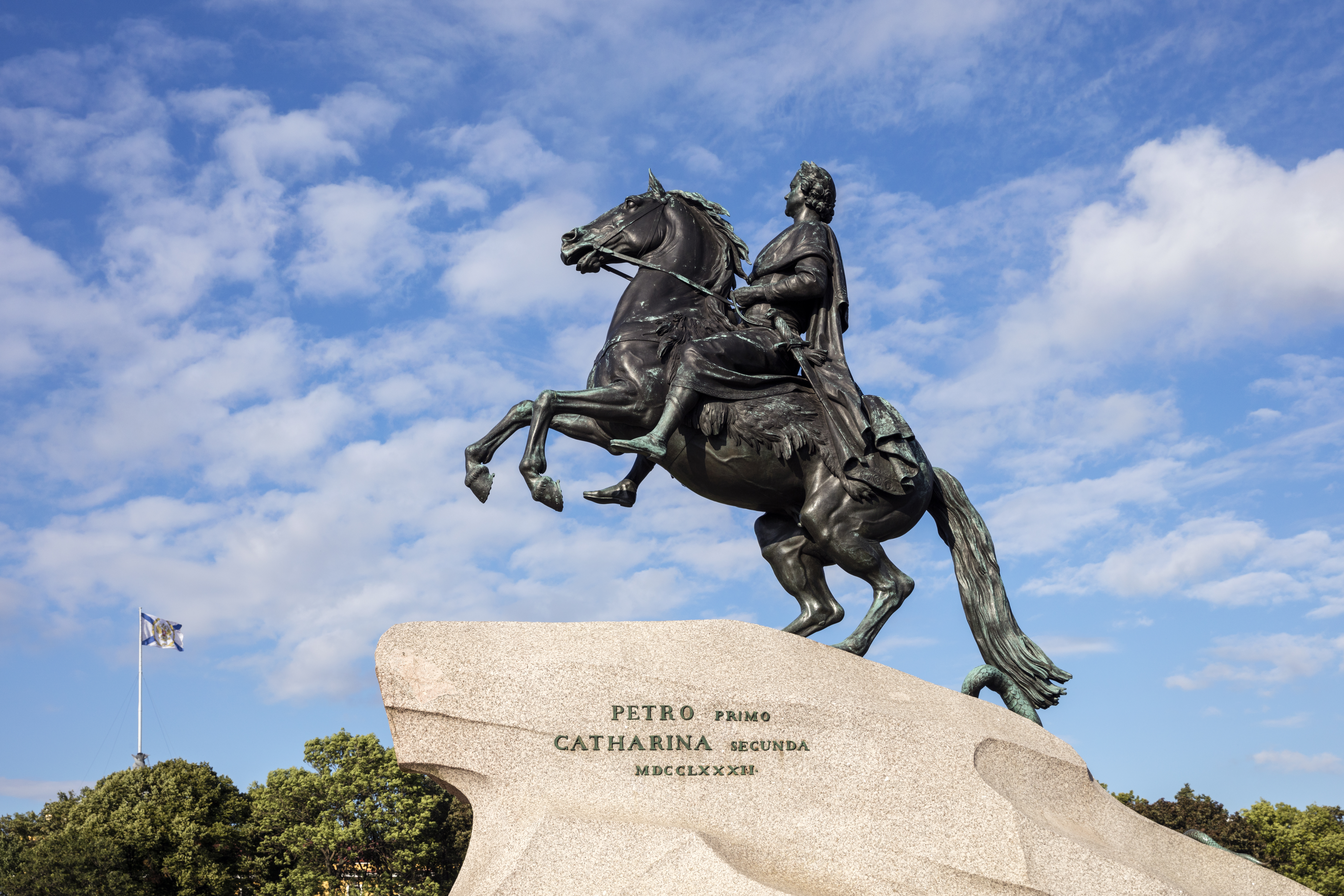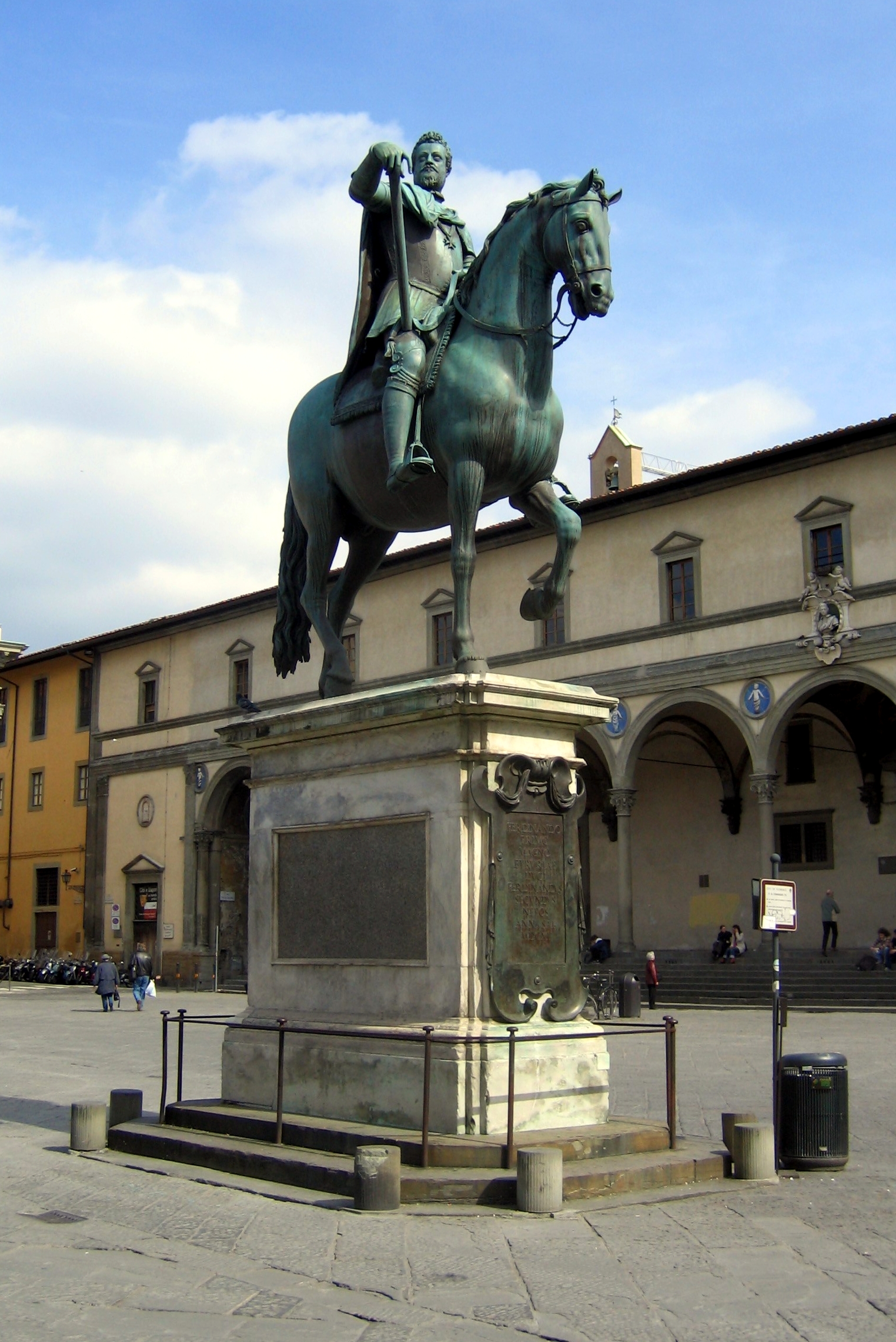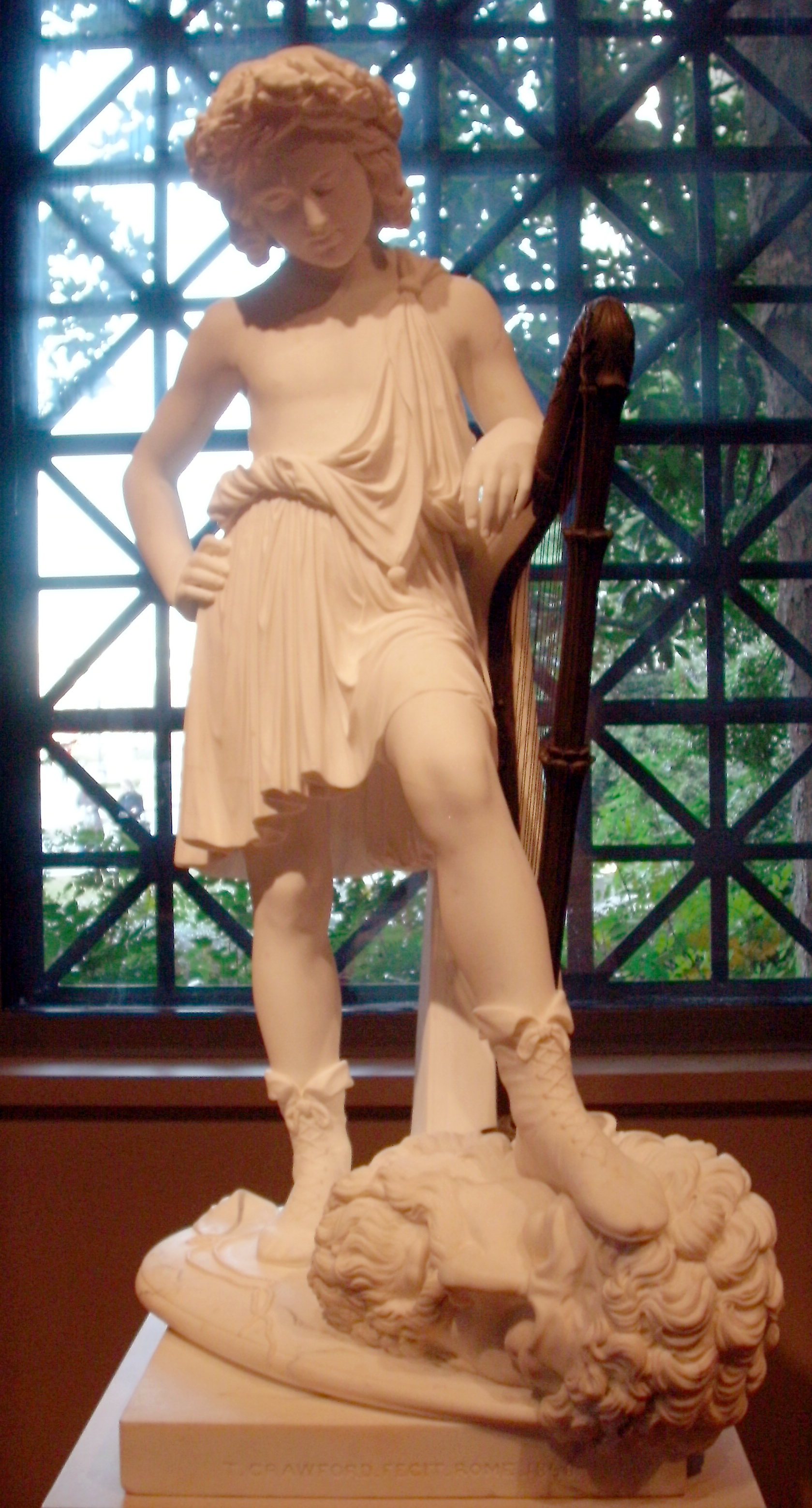|
Andrew Jackson (Mills)
''Andrew Jackson'' is a bronze equestrian statue by Clark Mills mounted on a white marble base in the center of Lafayette Square within President's Park in Washington, D.C., just to the north of the White House. Jackson is depicted dressed in military uniform, raising his hat with his right hand, while controlling the reins with his left hand as his horse rises on its rear legs. Other original castings stand in Jackson Square in New Orleans, Louisiana, and at the Tennessee State Capitol building in Nashville, Tennessee. Description The statue depicts Andrew Jackson, the general who commanded US forces in the Battle of New Orleans on January 8, 1815, and who served as the seventh president of the United States from 1829 to 1837. It was commissioned in May 1847, almost two years after Jackson's death at The Hermitage, his plantation near Nashville, Tennessee, by the Jackson Monument Committee chaired by John Peter Van Ness (who died before the statue was completed). Al ... [...More Info...] [...Related Items...] OR: [Wikipedia] [Google] [Baidu] |
Clark Mills (sculptor)
Clark Mills (September 1, 1815 – January 12, 1883) was an American sculptor, best known for four versions of an Andrew Jackson (Mills), equestrian statue of Andrew Jackson, located in Washington, D.C., with replicas in Nashville, Tennessee, Jacksonville, Florida, and New Orleans, Louisiana. Early years Mills was born on September 1, 1815, near Syracuse, in Onondaga County, New York. When his father died, he was sent to his uncle's but found that he was too harsh so he ran away. He had very little formal education. Before he turned 22, he had worked as a "teamster, lumberjack, farmhand, carpenter, and millwright." When he was quite young Mills was apprenticed to a millwright in New York. When he was twenty years old, in 1835, he overwintered in New Orleans. In 1837, he moved to Charleston, South Carolina, where he began to work as an ornamental plasterer. In the 1840s, he developed a faster, easier method of making plaster life-masks, which he then used to make portrait busts. E ... [...More Info...] [...Related Items...] OR: [Wikipedia] [Google] [Baidu] |
Hiram Powers
Hiram Powers (July 29, 1805 – June 27, 1873) was an American neoclassical sculptor. He was one of the first 19th-century American artists to gain an international reputation, largely based on his famous marble sculpture '' The Greek Slave''. Early life and studies Powers was born to a farmer on July 29, 1805 in Woodstock, Vermont. When he was 14 years old, his family moved to Ohio, about six miles from Cincinnati, where Powers attended school for about a year while staying with his father's brother, a lawyer. He began working after the death of his parents, first superintending a reading-room in connection with the chief hotel of the town, then working as a clerk in a general store. At age 17, Powers became an assistant to Luman Watson, Cincinnati's early wooden clockmaker, who owned a clock and organ factory. Using his skill in modeling figures, Powers mastered the construction of the instruments and became the first mechanic in the factory. In 1826, he began to frequent t ... [...More Info...] [...Related Items...] OR: [Wikipedia] [Google] [Baidu] |
Étienne Maurice Falconet
Étienne Maurice Falconet (1 December 1716 – 24 January 1791) was a French baroque, rococo and Neoclassical sculpture, neoclassical sculptor, best-known for his equestrian statue of Peter the Great, the ''Bronze Horseman'' (1782), in St. Petersburg, Russia, and for the small statues he produced in series for the Manufacture nationale de Sèvres, Royal Sévres Porcelain Manufactory Life and work Falconet was born to a poor family in Paris. He was at first apprenticed to a marble-cutter, but some of his clay and wood figures, with the making of which he occupied his leisure hours, attracted the notice of the sculptor Jean-Baptiste Lemoyne, who made him his pupil. One of his most successful early sculptures was of Milo of Croton, which secured his admission to the membership of the Académie royale de peinture et de sculpture in 1754. He came to prominent public attention in the Paris Salon, Salons of 1755 and 1757 with his marbles of ''L'Amour'' (Cupid) and the ''Nymphe desce ... [...More Info...] [...Related Items...] OR: [Wikipedia] [Google] [Baidu] |
Monument To Philip IV Of Spain
The Monument to Philip IV or Fountain of Philip IV is a memorial to Philip IV of Spain in the centre of Plaza de Oriente in Madrid, Spain. It was raised at the insistence of Isabella II of Spain in the first half of the 19th century, opening on 17 November 1843, a year before Narciso Pascual Colomer, Narciso Pascual y Colomer came up with the square's final layout. However, its equestrian statue of the king dates to the 17th century and was produced by the Italian sculptor Pietro Tacca. It was begun in 1634 and shipped to Madrid in 1640, the year of his death. The sculpture, atop a complicated fountain composition, forms the centerpiece of the façade of the Royal Palace. The statue was based in drawings by Diego Velázquez and a bust by Juan Martínez Montañés (who also collaborated on the work). The daring stability of the statue was calculated by Galileo Galilei: the horse rears, and the entire weight of the sculpture balances on the two rear legs—and, discreetly, its tail� ... [...More Info...] [...Related Items...] OR: [Wikipedia] [Google] [Baidu] |
Pietro Tacca
Pietro Tacca (16 September 1577 – 26 October 1640) was an Italian sculptor, who was the chief pupil and follower of Giambologna. Tacca began in a Mannerist style and worked in the Baroque style during his maturity. Biography Born in Carrara, Tuscany, he joined Giambologna's atelier in 1592. Tacca took over the workshop of his master on the elder sculptor's death in 1608, finishing a number of Giambologna's incomplete projects, and succeeding him almost immediately as court sculptor to the Medici Grand Dukes of Tuscany. Like his master he took full advantage of the fashion among connoisseurs for table-top reductions of fine bronze sculptures. Louis XIV possessed Giambolognesque bronzes of ''Heracles and the Erymanthian Boar''and ''Heracles and the Cerynian Stag'(now Louvre Museum) that are now attributed to Tacca, and dated to the 1620s Tacca began by finishing Giambologna's equestrian bronze of Ferdinand de' Medici for the Basilica della Santissima Annunziata di Firenze ... [...More Info...] [...Related Items...] OR: [Wikipedia] [Google] [Baidu] |
United States Capitol Dome
The United States Capitol features a dome situated above its rotunda. The dome is in height and in diameter. Designed by Thomas U. Walter, the fourth Architect of the Capitol, it was constructed between 1855 and 1866 at a cost of $1,047,291 (equivalent to $ in ). The '' Statue of Freedom'' tops the lantern on the dome, and the dome is centered over the origin on street maps of Washington, D.C. The dome is not stone, but rather cast iron carefully painted to appear to be made of the same stone as the capitol building below. It is actually two domes, one inside the other, and the total weight is . The dome's cast iron frame was supplied and constructed by the iron foundry Janes, Fowler, Kirtland & Co. in the Bronx, New York. The interior of the dome includes a detailed geometric and floral pattern of lightly colored plasterwork, with Brumidi's monumental ceiling fresco, '' The Apotheosis of Washington,'' appearing in the oculus at the top of the inner dome. First dome ... [...More Info...] [...Related Items...] OR: [Wikipedia] [Google] [Baidu] |
Thomas Crawford (sculptor)
Thomas Gibson Crawford (March 22, 1814 – October 10, 1857) was an American sculpture, sculptor who is best known for his numerous artistic contributions to the United States Capitol, including the ''Statue of Freedom'' atop its dome. Early life Crawford was born in New York City in 1814, of Irish parentage, the son of Aaron and Mary (née Gibson) Crawford. In his early years, he was at school with Page, the artist. His proficiency in his studies was hindered by the exuberance of his fancy, which took form in drawings and carvings. His love of art led him, at the age of 19, to enter the New York City studios of John Frazee (sculptor, born 1790), John Frazee and Robert Eberhard Launitz, artists and artificers in marble. In 1834, he went abroad for the promotion of artistic studies, and in the summer of 1835 took up his residence in Rome, for life as it proved. Launitz had provided Crawford with a letter of introduction to Bertel Thorvaldsen and upon arriving in Rome, Crawford be ... [...More Info...] [...Related Items...] OR: [Wikipedia] [Google] [Baidu] |
Statue Of Freedom
The ''Statue of Freedom'', also known as ''Armed Freedom'' or simply ''Freedom'', is a bronze statue designed by Thomas Crawford (sculptor), Thomas Crawford that, since 1863, has crowned the United States Capitol dome. Originally named ''Freedom Triumphant in War and Peace'', a U.S. government publication now states that the statue "is officially known as the ''Statue of Freedom''." The statue depicts a female figure bearing a military helmet and holding a sheathed sword in her right hand and a laurel wreath and shield in her left. Description The ''Statue of Freedom'' is a colossal bronze figure standing tall and weighing approximately 15,000 pounds (6,800 kg). Her crest peaks at 288 feet (88 m) above the east front plaza of the U.S. Capitol. She is an allegory, allegorical figure whose right hand holds the hilt of a sheathed sword, while a laurel wreath of victory and the Shield of the United States are clasped in her left hand. Her Chiton (costume), chiton is secured by ... [...More Info...] [...Related Items...] OR: [Wikipedia] [Google] [Baidu] |
Internet Archive
The Internet Archive is an American 501(c)(3) organization, non-profit organization founded in 1996 by Brewster Kahle that runs a digital library website, archive.org. It provides free access to collections of digitized media including websites, Application software, software applications, music, audiovisual, and print materials. The Archive also advocates a Information wants to be free, free and open Internet. Its mission is committing to provide "universal access to all knowledge". The Internet Archive allows the public to upload and download digital material to its data cluster, but the bulk of its data is collected automatically by its web crawlers, which work to preserve as much of the public web as possible. Its web archiving, web archive, the Wayback Machine, contains hundreds of billions of web captures. The Archive also oversees numerous Internet Archive#Book collections, book digitization projects, collectively one of the world's largest book digitization efforts. ... [...More Info...] [...Related Items...] OR: [Wikipedia] [Google] [Baidu] |
Smithsonian Institution Press
The Smithsonian Institution ( ), or simply the Smithsonian, is a group of museums, Education center, education and Research institute, research centers, created by the Federal government of the United States, U.S. government "for the increase and diffusion of knowledge". Founded on August 10, 1846, it operates as a trust instrumentality and is not formally a part of any of the Federal government of the United States#branches, three branches of the federal government. The institution is named after its founding donor, British scientist James Smithson. It was originally organized as the United States National Museum, but that name ceased to exist administratively in 1967. The Smithsonian Institution has historical holdings of over 157 million items, 21 museums, 21 libraries, 14 education and research centers, a zoo, and historical and architectural landmarks, mostly located in Washington, D.C. Additional facilities are located in Maryland, New York (state), New York, and Virg ... [...More Info...] [...Related Items...] OR: [Wikipedia] [Google] [Baidu] |
Treasury Building (Washington, D
Treasury Building may refer to: * Treasury Building, Adelaide, in Victoria Square, Adelaide * Treasury Building, Brisbane, Australia * Old Treasury Building, Melbourne, Australia * Treasury Building, Sydney, Australia * Treasury Building (Washington, D.C.), United States * Treasury Building (Dublin), Republic of Ireland {{Disambig ... [...More Info...] [...Related Items...] OR: [Wikipedia] [Google] [Baidu] |
Pennsylvania Avenue
Pennsylvania Avenue is a primarily diagonal street in Washington, D.C. that connects the United States Capitol with the White House and then crosses northwest Washington, D.C. to Georgetown (Washington, D.C.), Georgetown. Traveling through Southeast (Washington, D.C.), southeast Washington from the Capitol, it enters Prince George's County, Maryland, and becomes Maryland Route 4, MD Route 4 (MD 4) and then Maryland Route 717, MD Route 717 in Upper Marlboro, Maryland, Upper Marlboro, and finally Stephanie Roper Highway. The section of the avenue between the White House, which is sometimes referred to by its address "1600 Pennsylvania Avenue", and the Capitol forms the basis for the Pennsylvania Avenue National Historic Site and is sometimes referred to as "America's Main Street"; it is the location of official parades and processions, and periodic protest marches. Pennsylvania Avenue is an important commuter road and is part of the National Highway System (United States), Natio ... [...More Info...] [...Related Items...] OR: [Wikipedia] [Google] [Baidu] |








